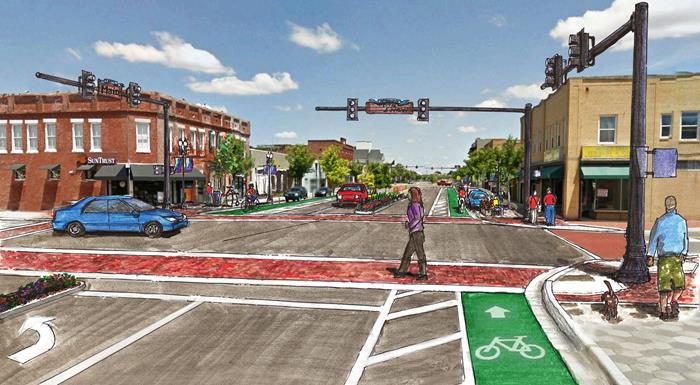Pittsburgh (September 29, 2016) - Michael Baker International, a global leader in engineering, planning and consulting services, announced today the promotion of Kenton Zinn, P.E., S.E., to director of the company’s Great Lakes Region. Michael Baker’s Great Lakes Region consists of Minnesota, Iowa, Missouri, Wisconsin, Illinois, Michigan, Indiana, Kentucky, Ohio and West Virginia.
Mr. Zinn, has more than 23 years of experience in bridge design and project management. Based in Chicago, he will advance a business development strategy in a key growth region for Michael Baker and oversee: client satisfaction; marketing; resource allocation and acquisition; talent management and development; and the overall efficiency and profitability of the company’s activities in the region.
“Kent’s extensive experience in the Great Lakes region, exemplary leadership and record of providing outstanding service for our clients makes him well-positioned for this important role,” said Kurt Bergman, CEO of Michael Baker International. “We continue to see strong expansion and growth potential in the Great Lakes region and are confident Kent and his teams will continue to demonstrate how We Make a Difference for our clients and the communities we serve.”
As director of the Great Lakes Region, Mr. Zinn will report to Michael Baker’s Chief Operating Officer, Brian Lutes.
Mr. Zinn most recently served as vice president and office executive for Michael Baker’s Madison, Milwaukee and Indianapolis operations. He has worked on projects throughout the Midwest, including long-span river crossings and complex structures, such as steel and concrete arches, steel box girders, bridge retrofits and post-tensioned concrete. He is a National Highway Institute instructor who teaches load and resistance factor bridge design courses to the staff of state departments of transportation nationwide.
Signature projects to which he has contributed include serving as a structural engineer for the Chicago Regional Environmental and Transportation Efficiency Rail Program, Belt Junction to Hamilton Park, for the Illinois Department of Transportation and the I-794 Lake Freeway and Hoan Bridge over the Milwaukee River for the Wisconsin Department of Transportation, among many others. Mr. Zinn and his team’s work on the Hoan Bridge resulted in the “Best of State Award for Structural Systems” from the American Council of Engineering Companies (ACEC) Wisconsin.
“I’m eager to build on the strong foundation Michael Baker has established in the Great Lakes Region,” said Mr. Zinn. “I look forward to bringing the firm’s full continuum of global expertise and experience to current and prospective clients.”
Mr. Zinn is a registered professional engineer and structural engineer and earned a Bachelor of Science in Civil and Environmental Engineering and a Master of Science in Civil Engineering from Case Western Reserve University.
About Michael Baker International
Michael Baker International is a leading global provider of engineering and consulting services, which include planning, architectural, environmental, construction, program management and full life-cycle support services as well as information technology and communications services and solutions. The company provides its comprehensive range of services and solutions in support of U.S. federal, state, and municipal governments, foreign allied governments, and a wide range of commercial clients. Michael Baker International has more than 6,000 employees in more than 90 locations across the U.S. and internationally. To learn more, visit www.mbakerintl.com
# # #

